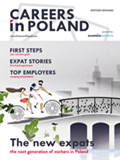5 costly hiring mistakes every employer should avoid

Editor

Photo by Brett Jordan on Unsplash
related articles
related offers
Imagine spending weeks – sometimes months – searching for the ideal candidate.
The job post is carefully crafted, applications are reviewed, and interviews are conducted. Your team invests hours vetting candidates, negotiating offers, and onboarding “the chosen one.”
And so, the candidate is in – you did it! Mission accomplished, “Veni, Vidi, Vici,”, “And they all lived happily ever after,” right?
Well, not quite.
Because what happens when your “perfect” hire hands in their resignation within the first month? What if, after all the effort and expense, their skills don’t match the job requirements or they fail to integrate with the team?
Just when you thought it was all said and done, you find yourself back to square one.
Unfortunately, these scenarios aren’t rare – they’re costly mistakes plaguing many employers, across many an industry.
So how can businesses avoid these HR pitfalls?
To help solve this mystery, we turned to our resident HR Business Partner, Paulina Mech, who has faced many such situations during her career at MBE Group.
Without further ado, here are five challenges employers encounter during recruitment – and ways to tackle them.
1. Poor job descriptions and mismatched expectations
Misleading job descriptions set the perfect stage for disaster. If candidates join a company with an incorrect understanding of their role, they may quickly become disengaged and leave.
“I’ve seen cases where a company thought they hired the perfect candidate, only for them to resign after a few weeks. The issue? They weren’t given the full picture of the role, and when reality set in, they felt misled,” Paulina shares.
She adds: “A poorly defined candidate profile is a serial killer – it wastes time, money, and team morale.”
- Craft job descriptions that clearly define responsibilities, challenges, and expectations.
- Provide real-world examples during interviews to illustrate daily tasks.
- Encourage candidates to ask about the role.
Read on: Salary vs. stability. What matters more?
2. Ignoring soft skills and cultural fit
A decision to hire based solely on technical ability can backfire.
Because what happens if a candidate struggles to integrate into the team?
Paulina Mech provides an example:
"I once worked at a company where the work culture was highly focused on change and challenges. We hired a candidate with great skills, but it later turned out that her resilience to change was lower than what we needed for this role, which led to some friction. Looking back, I believe she was an excellent employee – just one better suited for a company with a different work culture. It wasn’t about her lacking anything; it was simply that environment thrived on constant challenges, while those who preferred stability found it harder to fit in."
Creating a well-working team is not unlike assembling a puzzle – one mismatched piece can throw everything off. A candidate who struggles to communicate with coworkers can disrupt workflows, lower morale, and lead to yet another costly recruitment cycle.
- Assess both hard and soft skills during interviews.
- Use role-playing scenarios to evaluate teamwork and adaptability.
- Include team members in the interview process to gauge cultural fit.
3. Failing to properly assess candidates' skills
When companies lack the expertise to evaluate candidates properly, they risk hiring someone unqualified.
Mech shares a common pitfall:
“A small business once hired a financial controller without involving any finance experts in the hiring process. They only realized months later that this person lacked the necessary skills. By then, they had wasted time, money, and trust.”
- Involve subject matter experts in technical assessments.
- Use real-world skill tests to gauge competencies.
- Consider outsourcing recruitment for specialized roles.
Read on: Is your company's hiring strategy working for or against you? Here’s how to find out!
4. Overlooking recruitment metrics and data
Many companies neglect to track key hiring metrics, leading to repeated hiring mistakes.
Mech emphasizes the value of data:
“Imagine you’re hiring a project manager. You get 300 applications, but only 10% meet your needs. If you don’t track where the best candidates came from, you risk wasting crucial resources on ineffective sources next time.”
- Track the source and quality of candidates.
- Measure time-to-hire and cost-per-hire to refine the process.
- Conduct post-hiring reviews to assess recruitment success.
5. Rushing the hiring process (or prolonging it)
Sometimes, it’s all about timing.
Hiring too quickly can result in a poor fit – but if the hiring process drags on too long, there’s another risk, as Paulina Mech explains:
“I’ve seen companies lose fantastic candidates because they delayed decisions for weeks. By the time they made an offer, the candidate had already accepted another job.”
- Set a structured timeline for the hiring process.
- Keep communication open with candidates to maintain engagement.
- Automate administrative tasks to speed up processes.
How to prevent hiring mistakes?
Hiring mistakes can be costly, but they are also preventable.
By addressing these five common recruitment pitfalls, companies can build stronger, more cohesive teams and avoid the endless cycle of bad hires.
The key takeaways here? Clear job descriptions, balanced skill assessments, data-driven hiring, and a well-paced recruitment process.
Most importantly, however, we might need to reevaluate our belief that recruitment process is finished the moment the ink on the job contract has dried.
“You might think the process went smoothly,” concludes Mech, “but if your new hire leaves after a month because they didn’t fully understand the role, was it really a success?”
in collaboration with

Paulina Mech, MBE Group
HR Business Partner
Paulina Mech is an HR specialist with a strong track record in establishing HR departments from the ground up, talent acquisition, and shaping company growth strategies. She brings extensive experience in human resources management, spanning both startups and large organizations.












